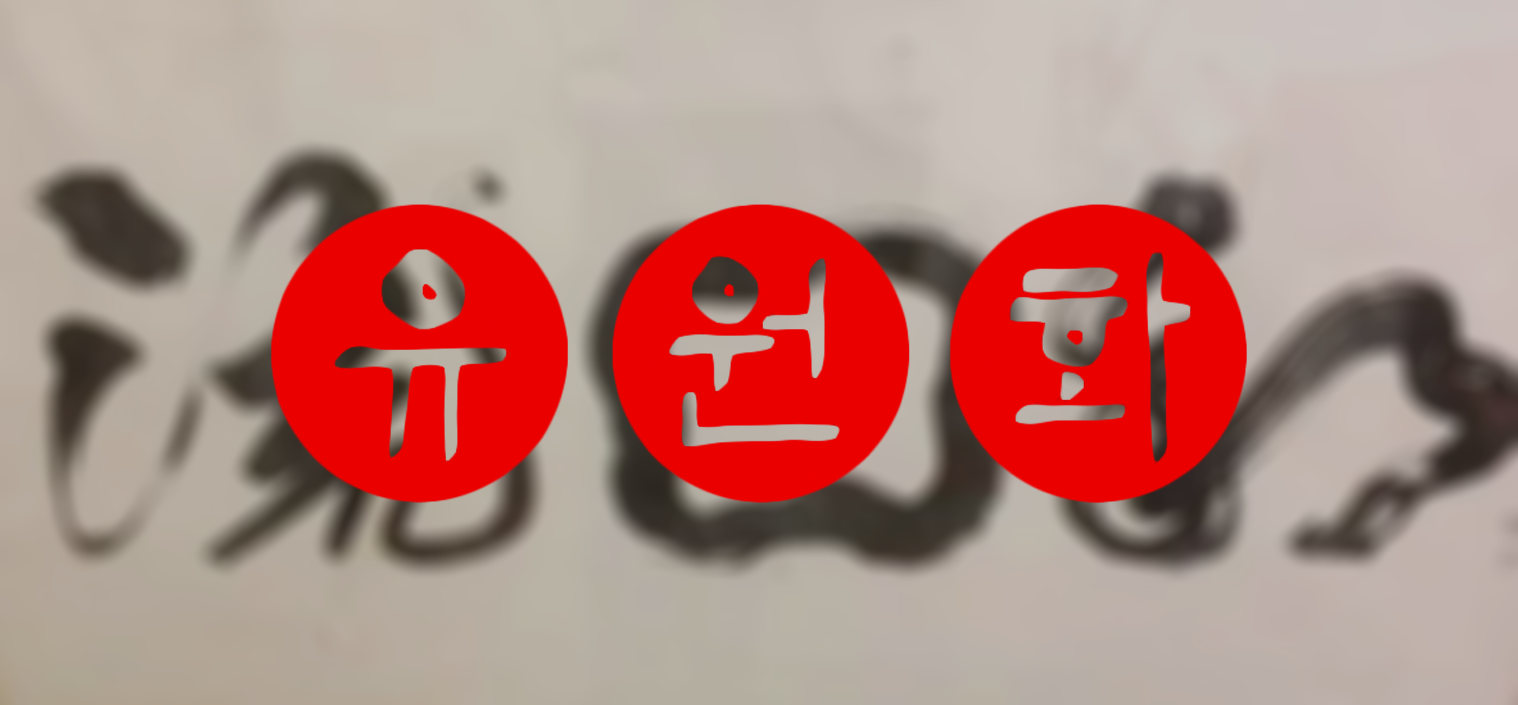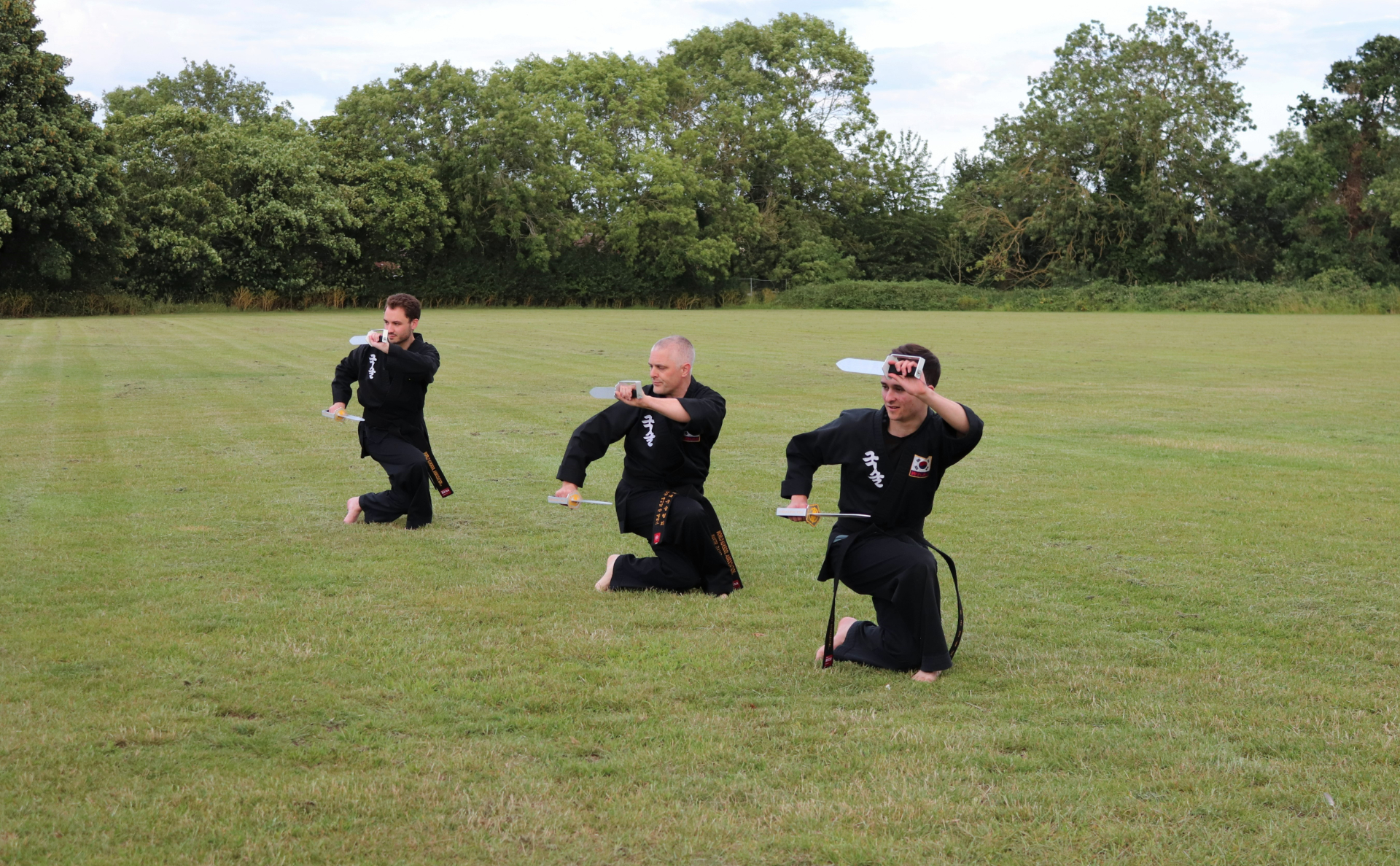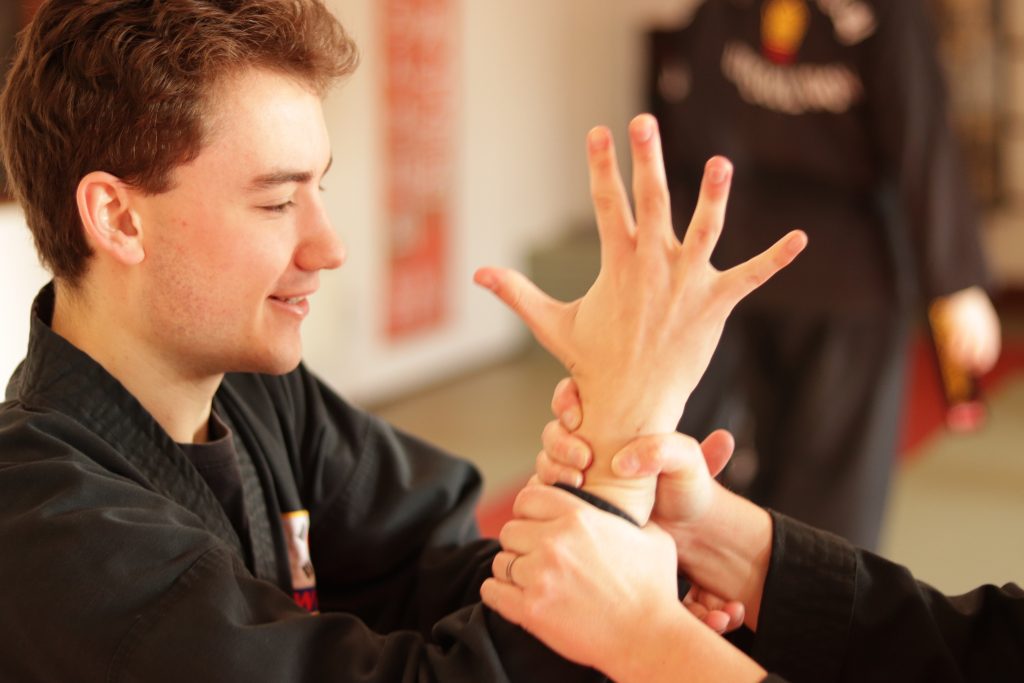This post is based on one which was originally written for the Kuk Sool Won of Lowestoft blog in 2016. You can view the original article here.
In Kuk Sool, as with most martial arts, we learn not only how to counter-attack as a form of self-defence, but we also learn how to effectively absorb or redirect oncoming forces should they be unavoidable. This can come in the form of redirecting or blocking strikes from an attacker, or – more obscurely – protecting ourselves from the impact of a fall should this be unavoidable, whether this be in a self-defence situation or in an every day occurrence where we may lose our balance.
A key element of Kuk Sool, taught right from beginner level, is Nahk Bup (낙법), or falling principles. Nahk Bup are essentially set ways of exiting a fall which prevent injury and protect the body – both inside and out. This is accomplished through the dissipation of the energy and force of impact, protecting our vital organs when we fall or are knocked over.
Nahk Bup may be divided into two basic categories:
- Hard Falls;
- Soft Falls.
Examples of hard falls include front breakfall / ahp nahk bup (앞낙법), back breakfall / dee nahk bup (뒤낙법), side breakfall / yuhp nahk bup (옆낙법), and front-side breakfall / ahp yuhp nahk bup (앞옆낙법). With hard falls, the technique works to use parts of the body to absorb impact without causing major damage. Some key principles of hard falls which aim to achieve this are keeping the chin tucked to the chest to avoid head injury, and hitting the ground hard with the arms in order to dissipate the energy of the impact force and divert this away from vital organs. We must also ki-hap (기합) before impact to strengthen and protect our insides.
Examples of soft falls include cartwheels / poong chah (풍차), and the rolling breakfall / hoe juhn nahk bup (회전낙법). These seek to redirect the energy of a fall, avoiding a force-on-force collision and utilising Kuk Sool’s philosophy of YOU-WON-HWA.
Through practising nahk bup repeatedly over time, we do not only prepare ourselves for the eventuality taking a fall and landing safely, but we are also conditioning our body to better withstand strikes and other impact forces. Repeated practise of nahk bup strengthens our internal organs, and tones connective tissues such as tendons and ligaments – in effect, tightening the body.
Repeated nahk bup practise also conditions the mind, allowing the body to respond reflexively to falling situations, and subsequently allowing you to subconsciously adopt a safe falling position when needed – reducing cognitive load and allowing you to stay present in what is happening around you. This is especially useful in a self defence situation, as your unfazed awareness of the situation will be advantageous in better allowing you to formulate a plan of how to respond to the situation and protect yourself from danger.



